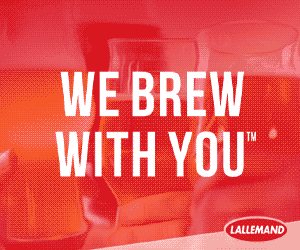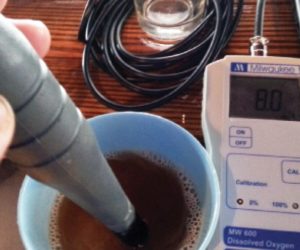Winning the Air Wars

Rule No. 1: Air is bad for beer. Bad, bad, bad! Beer does not need to have anything to do with air, ever.
Rule No. 2: Air is generally bad for wort, except in the presence of yeast. The only time you should consciously add air in the brewing process is at yeast-pitching time.
That’s it. Keep those two rules in mind, and you’ll never have to worry about the air issue again.
Now why do we need to make such simple proclamations about air in beer? Despite sometimes confusing and seemingly contradictory instructions, the air issue is an easy one to understand and use. The reason the air issue might sometimes seem confusing is that air is often discussed as a secondary issue.
For example a discussion of bottling might caution you to avoid splashing so as not to aerate the beer. Another discussion about mashing might warn you not to agitate the mash too much for fear of introducing air. And a discussion of fermentation will implore you to splash the wort, shake the wort, and generally use any means necessary to get air into the beer. What gives?
The air issue needs to be addressed as a single issue with the entire brewing process in mind and not just the individual steps. When taken in this light, the air issue is quite simple to understand. And always remember the two rules stated above.
Avoid Wet-Paper Beer
Oxidation is the reason brewers worry about the air issue. Oxidation is a common beer off-flavor perceived both in the aroma and flavor. Oxidation is most commonly perceived as flavor and aroma that is stale, cardboardy, or like wet paper. It can also, particularly in stronger, aged beers, be perceived as sherry-like or winey, having flavors of brandy, prunes, sour wine, or over-ripe fruit, and sometimes like old, stale vegetables. Oxidation can also cause the beer to darken and become hazy.
Oxidation occurs when air is introduced during the brewing process. But all brewers can naturally combat oxidation because they have a secret weapon.
Yeast, during its early growth stages in a nutrient-rich wort, is an air scavenger that will use up all of the air that is available in the solution. It not only loves air at this stage, it needs it. So it’s okay to introduce air at the yeast-pitching stage because we know that a) the yeast needs it, and b) the yeast will remove all of it from the wort during the yeast’s growth process.
The oxidation reaction occurs in finished beer most often during racking after primary fermentation and during bottle filling. These are the times to be most careful in avoiding unnecessary splashing of the beer. Oxygen, if introduced at this stage, will chemically react with beer flavor compounds, causing the beer to grow stale. Heat and warm storage of the finished beer will accelerate the oxidation process.
The other key stage in the brewing process where oxidation can occur and be carried into the finished beer is during the mash and sparge. This is referred to as “hot-side aeration.”
The Hot Zone
Hot-side aeration describes the pick-up of air during the “hot” stages of the brewing process. However, it is really only a concern during the mash and sparging stages. During the mash and sparge, there are certain enzymes present in the malt that, when in the presence of oxygen, can combine with malt compounds and form the flavor and aroma compounds that we perceive as oxidation. Therefore, taking care not to splash the wort too much during mashing, sparging, and runoff into the kettle will help you avoid these flavor and aroma compounds. As soon as you begin the boil, the enzymes will be destroyed, and the risk of oxidation at this point is then eliminated. So don’t worry about stirring and splashing during the boil. Boiling will drive any remaining oxygen out of the wort, and many large commercial breweries actually aerate the wort during or immediately after boiling to help precipitate tannins and to strip unwanted volatile gasses from the wort.
But remember, because boiling strips the wort of oxygen, it is even more important to aerate the wort when you pitch the yeast.
Oxygen for Yeast
Aeration is the process of getting oxygen into the wort at yeast-pitching time, the only time during the brewing process that you should consciously be introducing air. It is imperative that yeast have oxygen available at this stage for energy buildup and growth.
There are numerous methods for getting air into the wort at this stage. The easiest and most common is to splash the cooled wort as it enters the fermenter. (Do not start splashing until after the wort is cool.) Running the wort down the side of the fermenter is a standard method, but simply attaching a device such as the bent pocket clip from a ballpoint pen to the end of the racking hose works even better. The wort hits the clip and sprays out into the fermenter. The other most common method is shaking the fermenter for several minutes. The combination of splashing and shaking should be adequate to get enough oxygen dissolved into the wort. As with all practices at this stage, be very careful about sanitizing your equipment and avoiding contamination.
If you are brewing a higher-gravity beer, bear in mind that higher-gravity worts cannot hold as much O2 in solution and therefore they should be particularly well aerated.
One of the easiest and most effective methods for aerating all types of wort is to buy or build a wort aerator. Many homebrew shops and mail-order companies sell regulators for mini oxygen tanks and small aerating stones for about $15 to $20 each. You can buy small tanks of pure oxygen at your local Home Depot for $5 to $7. Since no bacteria can live in pure oxygen, you will need only sanitize the regulator, hose, and air stone. A 30-second blast from one of these systems will do the trick handily. Liquid Bread of Orlando, Fla., makes a complete pure oxygen system called the Oxynater for about $50. You can also make your own airstone system by buying an aquarium aerator with aerating stone and some tubing. Because you will be pumping in room air, you should also add an in-line 0.2- to 0.5-micron syringe-type filter to catch any bugs.
Both shaking and splashing vigorously and oxygenating with pure O2 should give homebrewers the desired results. Studies have shown that excessive wort oxygenation is difficult to achieve even with pure oxygen and that worts will reach a maximum oxygen saturation level, after which more O2 just won’t dissolve. So don’t worry about too much O2; worry about not getting enough in.
Perhaps just as important as proper aeration at pitching are proper brewing techniques to avoid aerating during the brew. If you are an all-grainer, stir your mash gently, and quietly run the wort off into the kettle without splashing. All brewers, whether all-grain, partial mash, or extract, need to be very careful when racking and bottling. Always use a siphon, and employ a hose long enough to reach to the bottom of the receiving bucket, so that wort is not splashing or running down the sides of the bucket. Also, regulate the flow of beer during racking to avoid splashing.
During bottling, use a bottle filler or hose that reaches to the bottom of the bottles and fill from the bottom up. Most homebrewers bottle condition their beers. Because you will be adding new fermentable sugar to the beer, the yeast will respond as if they are in a new wort and begin their growth phase all over again (hence the sediment in the bottom of the bottle). This means that the yeast, as during primary fermentation, will use up all of the air in the bottle. Bottle conditioned beer, then, is a good hedge against oxidation, but it’s no excuse for not following careful racking and filling procedures.
The Big Picture
The concepts of aeration in brewing vs. oxidation in brewing are really quite simple. Follow the two rules outlined, and look at the air issue over the course of the whole brew to better understand it.
Remember to keep air pick-up to a minimum during mash and sparge. Boiling will drive out any air remaining in the wort. Then, once the wort is cooled, it needs to be aerated for the benefit of the yeast. Don’t bother trying to aerate hot wort. Hot wort cannot hold enough air in solution to really do any good. The yeast will use up all of the air, and as fermentation gets under way, your wort will again be airless. Keep it that way throughout the rest of the process through to bottling.
You might be thinking that bottle conditioning cannot work now because there is theoretically no air left to help the yeast grow. True, but there are enough healthy, viable yeast cells left in the beer to ferment the small additional amount of priming sugar that has been added. And if there is any air, the yeast will scavenge it out.
Keep your homebrew cool, keep the brewing process clean, and avoid oxidation and you should be enjoying your beer for a long, long time.



